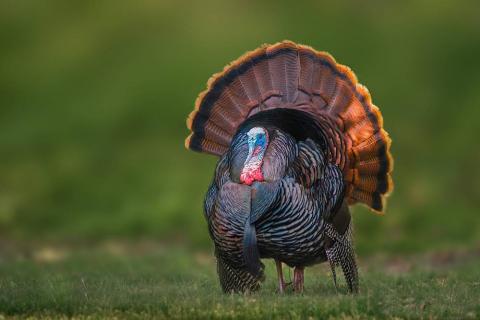By Heath Wood
After an unusually warm fall, the upcoming mid-November rifle season has hunters and co-workers buzzing about the long-range forecast, hoping to pinpoint the best days to hunt. At my job, we’re fortunate to get one designated “deer day” off during the week to hit the woods. As openingcxnhb week approaches, everyone is eyeing Thursday—a day predicted to bring a near twenty-degree temperature drop, making it the most coveted hunting day. Luckily for me, Thursday has been my hunting day for the past 17 years at this job. Will it truly be the best day? Only time will tell. In deer hunting, timing is everything, and the rut offers hunters a prime opportunity to catch bucks on the move. Understanding how weather impacts deer behavior during this critical period can dramatically increase your chances of success. Recognizing which conditions trigger peak movement and why can help you plan your hunt around the moments when deer are most active.
Cold Fronts: The Game Changer

Photography by Lance Krueger
Cold fronts are often considered the best weather change to trigger deer movement during the rut. When a cold front sweeps in, it brings lower temperatures, and deer are more likely to be active throughout the day. The sudden temperature drop prompts bucks to move around more, which makes catching them in the open easier as they seek out does to breed. A cold front is especially beneficial for hunters who prefer daytime hunting, as the bucks are less likely to be nocturnal during cooler periods. Some of the best times to hunt are right before or after a cold front moves through. Bucks will likely be checking scrapes and covering a lot of ground, so scout areas where scrapes are plentiful and be ready for those sudden changes in the weather.
Wind: The Perfect Balance
Wind direction and speed are crucial for both hunter scent control and deer movement. Moderate wind speeds (around 5-15 mph) are generally ideal. Like many hunters, I find hunting less enjoyable when it’s too calm. Deer tend to be more cautious, making it harder to get within archery range. On the other hand, when the wind is too strong (over 20 mph), deer often stay bedded longer, as the high winds make it harder for them to sense predators. In contrast, a gentle breeze seems to encourage better movement, striking the ideal balance for a successful hunt.
It is vital not to let the wind intimidate you when hunting. Use the wind to your advantage to keep your scent away from high-traffic areas, and look for deer in sheltered spots if the wind is especially strong. I recall hunting a farm for several years with a thick cedar tree bottom. When the wind was gusting, you could almost bet on deer hanging out in these secluded places to stay out of the wind and concealed.
Overcast and Cloudy Days: Extended Movement

Deer are naturally crepuscular, meaning they’re most active at dawn and dusk. However, overcast or cloudy days during the rut can extend their activity throughout the day. For many hunters, a good hunting day is a bright and sunny one. Yet, a cloudy, dreary day produces more success when considering better deer movement. The dim lighting provided by cloud cover makes deer feel safer, giving hunters extended hours of deer movement. Overcast days are perfect for staying out longer than usual, especially in areas with high deer activity; hunters can use this opportunity to hunt open fields or edges where bucks might be chasing during midday hours. A cloudy day is ideal, yet a light rain or drizzle can also improve hunting conditions during the rut. A touch of rain softens the ground, making your movements quieter, and washes away scent, making it harder for deer to detect you. Bucks tend to stay on the move even in light rain, often cruising in search of does.
Frosty Mornings: A Natural Alarm Clock
Frosty mornings can be fantastic for early movement. The temperature drops overnight, and the subsequent chill in the air triggers bucks to move, especially around sunrise. The frosty cover also adds a layer of silence to your approach, allowing you to move more stealthily.
When there is a chance of frost, I love getting in my stand well before daylight to be ready for bucks moving at first light. One of my quickest deer hunts happened on a morning with a heavy frost. It was a cold November day, and I had just settled into my stand. Normally, I wouldn’t have been fully prepared so early, but the unmistakable sound of crunching frost-covered leaves grabbed my attention for what felt like a full minute. Moments after legal shooting light, I finally spotted a mature southern Missouri eight-pointer cruising along the top of a ridge. Without the frost giving away his movement, he might have slipped by unnoticed.
Hunting the rut requires patience and timing, and by understanding how different weather patterns affect deer behavior, you can optimize your chances of success. The best strategy is to monitor weather forecasts closely and prepare your hunting plan accordingly. From cold fronts to overcast skies, knowing which conditions to watch for and how to adapt your strategy can make all the difference in a successful rut hunt.




























